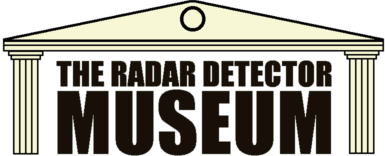
After WWII, radar speed devices came on the scene at some police departments in the late 1940s: "A connecticut firm (Automatic Signal Co.) built one of the first traffic radars in 1947 for the state police. Early radars were bulky and heavy systems (vacuum-tube technology) that usually consisted of three or more separate pieces of equipment, an antenna (sometimes 2 antennas -- separate transmit and receive), a 45 pound (20 kg) box (the tube transmitter, receiver and processor), a strip chart pen recorder for a permanent record, and a needle meter calibrated in mph. Sometimes the antennas mounted on a tripod and sometimes on the hood or fender of a patrol car. Some of the early 1960s' models mounted the antennas in the back windshield of the patrol car." - Sawicki, David S. Traffic Radar Handbook : A Comprehensive Guide to Speed Measuring Systems (2002). "The first traffic radars transmitted at 2.455 GHz in the S band (2 - 4 GHz). Note that many microwave ovens transmit at about 2.45 GHz, and low power unlicensed wireless communications transmit from 2.400 - 2.4835 GHz. S band radar antenna beamwidths varied from 15 to 20 degrees depending on model. These radars operated from a stationary position only and measured receding as well as approaching targets to an accuracy of about ± 2 mph. The maximum detection range was an unimpressive 150 to 500 feet (45 to 150 meters); vacuum-tube receivers do not have the sensitivity of solid-state receivers. A radar with a 150 foot detection range would have less than 1.5 seconds to measure a target traveling 68 mph (100 feet/second or 109 kmh). S band radars are obsolete." - Sawicki, David S. Traffic Radar Handbook : A Comprehensive Guide to Speed Measuring Systems (2002). In the November 23, 1953 issue of Time Magazine, there was an article entitled "Big Brother Is Driving". They characterized radar as being "as invisible as the Thought Police in Orwell's chiller 1984." This remained true for many years to come. By the 1960s, Radar was common at departments across the country.. |
website counter